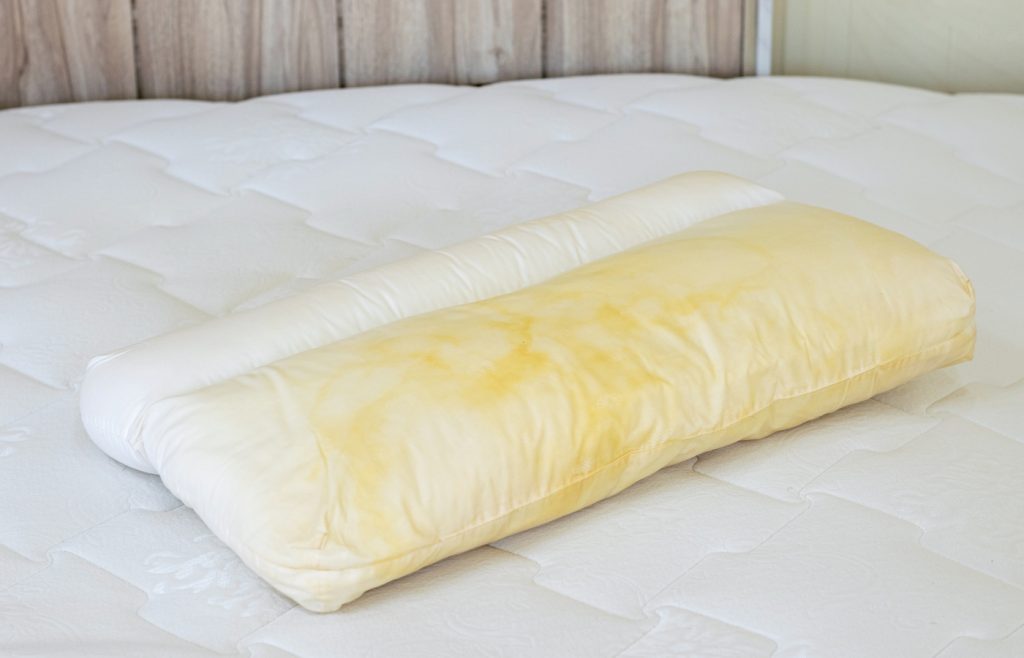A stained or yellowed mattress can quickly become an eyesore, even if it doesn’t directly affect sleep quality. Over time, it’s almost inevitable that marks will appear due to daily use and life’s unpredictable moments.
Understanding the causes of this yellowing allows for quick and efficient action to preserve your bedding.
Sweating: A Leading Cause
Every night, our bodies release sweat, a natural phenomenon that can intensify during hot weather or bouts of fever.
This sweat contains salts and minerals that accumulate in the mattress, leaving yellow stains on the surface. These marks are often initially invisible but become more pronounced over time.
Individuals prone to excessive sweating generally notice this yellowing more quickly. This phenomenon can be exacerbated if the mattress is not protected by a cover or waterproof mattress protector.
Cosmetics: An Underrated Factor
If you apply skincare products before bed, you may unknowingly contribute to the yellowing of your mattress. Moisturizers, hair oils, or body balms leave greasy residues that become deeply embedded in the fibers.
These greasy marks do not come off with a simple surface cleaning. They form yellowish rings that alter the mattress’s appearance over time.
This issue can be avoided by using a washable mattress protector that serves as a barrier between your bedding and the products applied to your skin.
Urine Accidents: A Common Challenge
Urine stains, frequent in households with young children or elderly individuals, are another notable cause of yellowing.
If not cleaned immediately, these stains can set deep into the mattress, leaving persistent marks and sometimes odors.
Quick treatment is essential to prevent them from becoming difficult, if not impossible, to remove. Using absorbent products like baking soda can help limit damage, but more powerful solutions are often necessary for thorough cleaning.

The Effects of Sunlight: A Commonly Overlooked Risk
UV rays can damage textile fibers and gradually cause yellowing of your mattress. If your bedroom is particularly bright or if your mattress is regularly exposed to sunlight, its original color can be affected.
To limit this effect, consider protecting your mattress with a cover or avoiding direct sunlight exposure.
A simple rotation of the mattress can also help distribute exposure and reduce the intensity of yellowing.
Natural Solutions to Restore Your Mattress
There’s no need to resort to harsh chemicals to clean a yellowed mattress. Natural methods that are effective and environmentally friendly can restore its appearance.
Lemon, for example, is known for its whitening and disinfecting properties. Apply its juice to the stains, let it sit, then rinse and allow to air dry. This simple technique helps remove marks while leaving a fresh scent.
White vinegar, often used for descaling, is another powerful ally. It penetrates the fibers and dissolves the residues causing yellowing. Combine it with baking soda for even more effective cleaning.
Finally, a steam cleaner offers a modern and convenient solution for deep sanitizing. The heat extracts dirt, eliminates bacteria, and refreshes the surface without the need for additional products.

